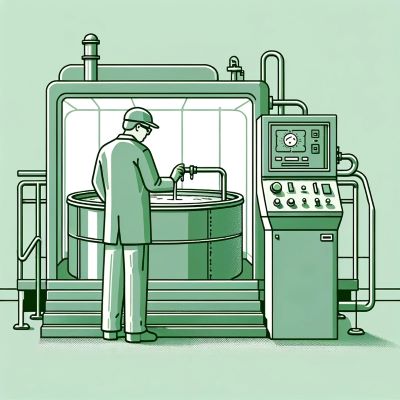Automated Cathodic Protection in Electroplating
 Automated cathodic protection is a sophisticated technology used primarily in metal finishing processes such as plating. It involves controlling the electrical potential of a metal object to prevent corrosion, a common challenge in the electroplating industry. In traditional electroplating, the workpiece is typically removed from the bath as soon as the plating rectifier is switched off. If left in the bath, there's a risk of colour degradation or performance degradation of the newly plated workpiece.
Automated cathodic protection is a sophisticated technology used primarily in metal finishing processes such as plating. It involves controlling the electrical potential of a metal object to prevent corrosion, a common challenge in the electroplating industry. In traditional electroplating, the workpiece is typically removed from the bath as soon as the plating rectifier is switched off. If left in the bath, there's a risk of colour degradation or performance degradation of the newly plated workpiece.
To address this challenge, Kirchner's plating rectifiers introduce a new approach. These systems are designed to mitigate the adverse effects commonly associated with the immediate cessation of the plating process. Rather than turning off the current completely at the end of the process, Kirchner's systems reduce the output current to 1/64th of the set plating current. This reduced current provides a safety feature that keeps the workpiece in a stable condition even if it remains in the bath for some time after plating. This feature greatly enhances operational flexibility, allowing more latitude in the handling of electroplated parts.
In addition, Kirchner plating power supplies offer another workflow management advantage. They make it possible to start a plating process towards the end of the working day and leave the system unattended overnight. The system is programmed to switch off after a pre-determined period of time, ensuring that the plating process is completed. This automatic shutdown is critical in preventing passivation or discolouration of parts that could otherwise occur if left in the bath overnight. Such an automated approach not only streamlines the workflow, but also ensures the consistency and quality of the electroplated components.
The concept of maintaining a holding current or potential after the electroplating process is an integral part of these systems. It provides a controlled environment for the newly coated metal, protecting it from immediate environmental reactions that could compromise its quality. This process represents a significant advance in the field of electroplating, offering a blend of efficiency, quality control and flexibility that is essential in modern manufacturing and metal finishing industries.
 x 0,4A / 0-12V
x 0,4A / 0-12V  x 25A / 0-10V
x 25A / 0-10V  Multi-channel power supply
Multi-channel power supply  German
German 